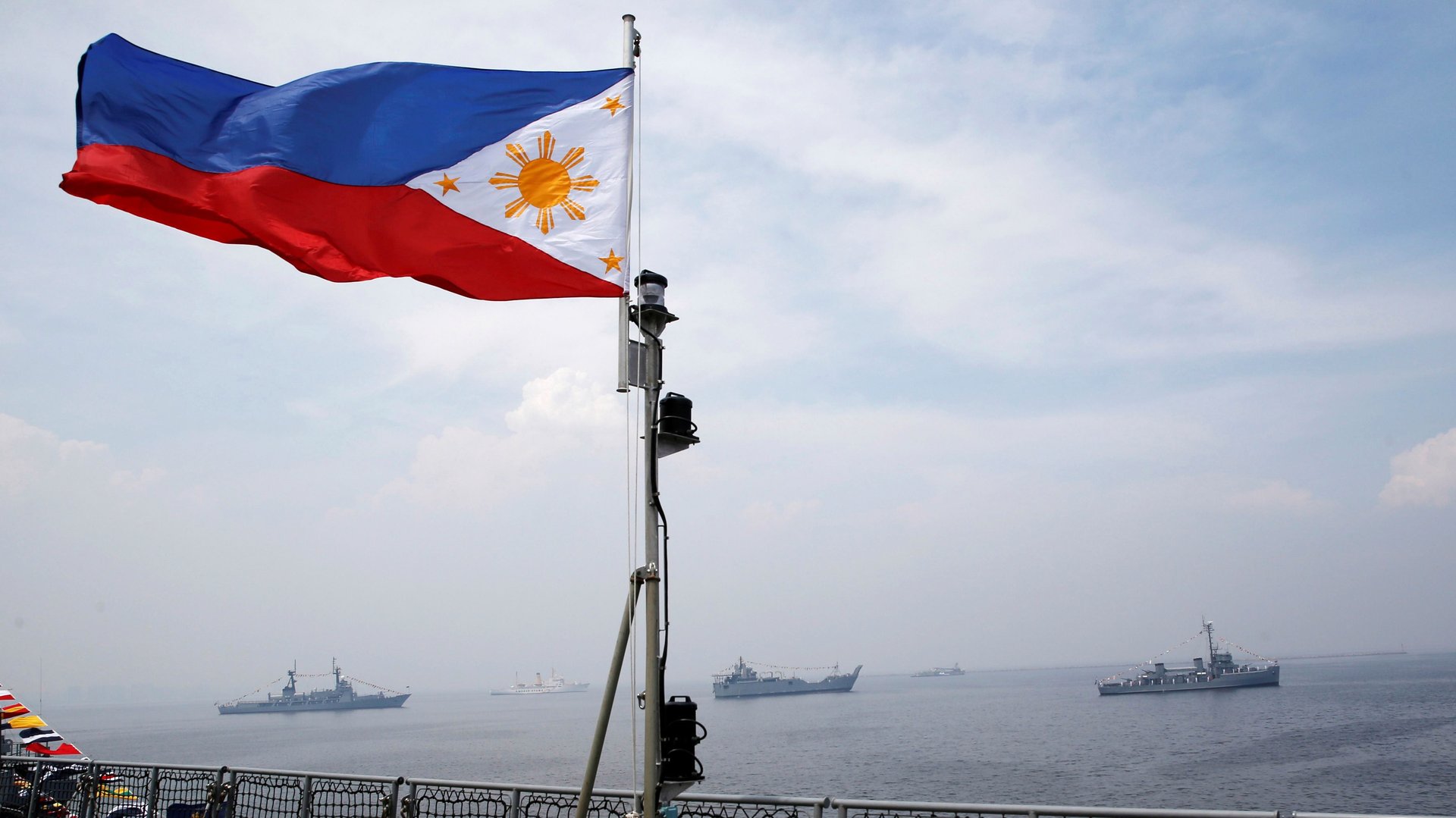The Philippine navy’s latest achievement shows how woefully behind it is
With the South China Sea being a geopolitical hotspot, and the Philippines claiming territory in it, one might assume the island nation has a decent navy to defend its maritime interests. But an achievement being celebrated this week shows, if anything, just how woefully far behind it is.


With the South China Sea being a geopolitical hotspot, and the Philippines claiming territory in it, one might assume the island nation has a decent navy to defend its maritime interests. But an achievement being celebrated this week shows, if anything, just how woefully far behind it is.
The accomplishment, announced yesterday, is the testing of the navy’s first ship-borne missile system. Manila ordered the $11.6 million system as part of a military modernization program. Of course, “modernization” is relative. For the Philippines navy, the capability to fire a missile from a ship is a step up, even though the capability has been commonplace elsewhere for decades.
“We are one of the weakest [navies], even in the Southeast Asian region,” Philippine Navy chief Robert Empedrad told reporters in May. “Maritime nations like Malaysia, Indonesia, Japan, and Singapore, and even Vietnam and Myanmar, have upgraded their naval capability, while the Philippine Navy went into obsolescence.”
The new missile systems could make a difference. “It will be a deterrent because, this time, we have a credible armament that can strike a punch whether the target is a small or large ship,” an unnamed commander told Reuters in May. He said the navy would become more of a force in patrolling the South China Sea, and deterring pirates. The Israeli-made missiles have a range of 8 km (5 miles) and will be loaded on fast assault craft commissioned last year. In the test, the system hit a target 6 km (3.7 miles) away.
China’s militarization of the South China Sea has alarmed many in the Philippines, despite president Rodrigo Duterte playing it down as he moves the nation further into Beijing’s orbit. Earlier this year, China installed missiles at a military base it’s constructed atop Mischief Reef, which is just 217 km (135 miles) from a Philippines coast.
More naval upgrades are in the works for the Philippines. Manila has allocated about $2.4 billion over the next five years to acquire frigates, drones, helicopters, fighter jets, surveillance planes, and radar systems. Later this year, for example, it will receive maritime helicopters with anti-submarine warfare capabilities from an Anglo-Italian arms company.
For now, missiles are a big first step. “Naval warfare has become missile-based,” Empedrad told reporters in May, “and we cannot afford to be left behind.”